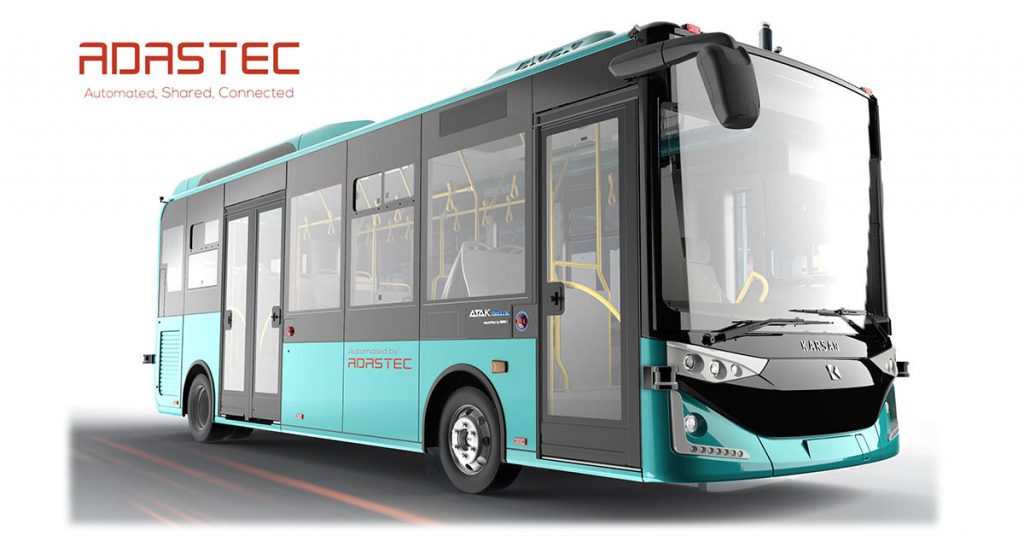
A new autonomous bus capable of level 4 automated driving will use thermal cameras to help it see and operate 24-7.
The flowride.ai automated driving platform from California tech company Adastec will use thermal scanners from Oregon sensor company Teledyne FLIR to help autonomous buses operate every hour of the day, every day of the year, through ever-changing weather conditions, the companies recently announced.
Adastec is incorporating flowride.ai into Turkish busmaker Karsan’s ATAK electric bus. This 8.3-meter-long vehicle is powered by 220 kilowatt-hour batteries and can carry more than 52 passengers, and is roadworthy for highways and streets in the United States and Europe.
Adastec noted the new jointly developed vehicle, which debuted in February, was the world’s first full-size, full-speed autonomous bus capable of level 4 autonomy—that is, the ability to act without any human intervention in the vast majority of situations. Previously, level 4 autonomous public transportation involved small prototype vehicles with limited passenger capacity, slower speeds and no road legality for city usage.
The bus will feature two Teledyne FLIR thermal cameras. One is positioned at the front of the bus to scan forward, while the other is mounted on the right rear side of the bus, scanning side to side.
With the ability to see up to four times farther than headlights at night, thermal cameras excel in driving situations where other sensor technologies might be challenged. These can include low-visibility and high-contrast conditions, such as nighttime darkness, shadows, dusk, sunrise, fog, smoke, dust or direct sun/headlight glare. In addition, as passive sensors, thermal cameras are not affected or blinded by active sensors such as LiDAR or radar.
The flowride.ai system also uses three 5.4 megapixel Triton TRI054S cameras from Canadian company Lucid Vision Labs installed on the front dashboard of the bus, allowing for day and night high-precision recognition. Each features the Sony IMX490 backside-illuminated CMOS sensor, which allows for simultaneous imaging with 120 decibels of dynamic range and LED flicker mitigation.
“The Triton cameras allowed us to capture a wider angle of view, enabling the sensors to recognize traffic conditions and objects such as obstacles, signs and traffic signals,” Kerem Par, chief technology officer at Adastec, said in a statement.The thermal and optical imagery is fused with data from LiDAR, ultrasonic sensors and radar, all to provide redundancy and the flexibility to interpret the environment in a wide variety of conditions for the most appropriate decisions and actions safely, Adastec noted.

